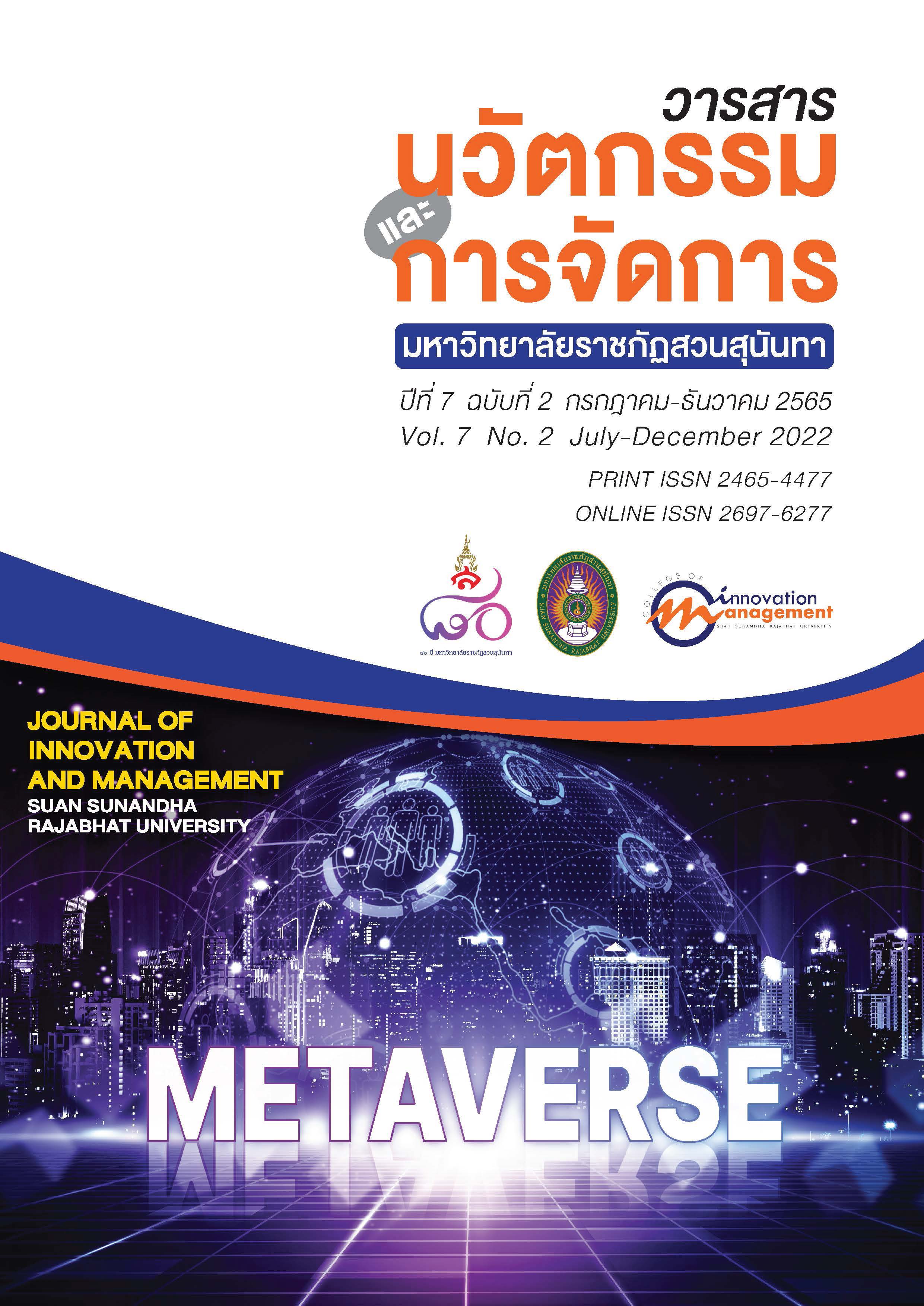A Study Collaboration between Government, Private, and Public Sectors in the Development of Tourist Attractions in Five Southern Border Provinces
Keywords:
Collaboration, Development of Tourist Attractions, Five Southern Border ProvincesAbstract
The purposes of this qualitative research were: (1) to study the patterns, characteristics, and activities of the collaboration between the government, private, and public sectors in the development of tourist attractions in the five southern border provinces, (2) to examine the problems and obstacles, and (3) to provide guidelines and policy proposals for the development of tourist attractions. A structured interview form was applied as an instrument to conduct an in-depth interview with 15 key informants obtained from purposive sampling. Data were analyzed by using content and typological analysis. The results found that: (1) the collaboration was a network pattern. The nature of collaboration was sharing information, consulting, and playing a role. Collaboration activities were seeking information and preparing joint project; (2) problems and obstacles included, for example, the entrepreneurs and people in the community had insufficient income during the COVID-2019 pandemic, the product of the tourism community was not widely known, population structure was an aging society, skilled workers were insufficient; and (3) guidelines such as knowledge of public relations, selling community products online and foreign language training etc., and policy proposals such as having policies to encourage investment in business sectors.
References
Agranoff, R. and McGuire, M. (2003). Collaborative Public Management: New Strategies for Local Governments. Washington, DC: Georgetown University Press.
Asamoah, K. (2013). Policy Implementation: A Tool for Enhancing Tourism Development in Ghana. Journal of Law, Policy and Globalization, 10, 19-30.
Chaikeaw, P. (2018). Tourism Cooperative Strategies between Chiang Rai Province, Thailand and Bokeo Province, Lao PDR for Sustainable Tourism. Thesis of the Degree of Doctor of Philosophy Program in Social Sciences. Bangkok: Ramkhamhaeng University. (in Thai)
Foster, C., McCabe, S. and Dewhurst, H. (2010). Management Development Skills in the Hospitality and Tourism Sector: Needs and Issues from a Regional Perspective. Tourism and Hospitality Planning and Development, 7(4), 429-445.
Jackson, E. T. (2004). Community Innovation through Entrepreneurship: Grant Making in Canadian Community Economic Development. Journal of the Community Development Society, 35(1), 65-81.
Kanokpongchai, S. (2022). Cultural Heritage for Sustainable Tourism after the Covid-19 Crisis. Bangkok: Chulalongkorn University Press. (in Thai)
McGuire, M. (2006). Collaborative Public Management: Assessing What We Know and How It. Public Administration Review, 66(1), 33-43.
National Strategy Secretariat Office, Office of the National Economic and Social Development Board. (2016). The Twelfth National Economic and Social Development Plan (2017-2021). Bangkok: National Strategy Secretariat Office, Office of the National Economic and Social Development. (in Thai)
National Strategy Secretariat Office of the National Economic and Social Development Board. (2018). National Strategy 2018-2037. Bangkok: National Strategy Secretariat Office of the National Economic and Social Development. (in Thai)
Office of the Permanent Secretary Ministry of Tourism and Sports. (2017). Tourism Development Plan No. 2 (2017-2021). Bangkok: Office of Printing Works, Veterans Affairs Organization. (in Thai)
Rangsee, P. (2017). Cooperation Among State Agency Private Sector and Community in the Management of Ecotourism in Ban Mae Kampong, King Amphoe Mae on, Changwat Chiang Mai. Thesis of the Degree of Master of Art Program in Political Science. Chiang Mai: Chiang Mai University. (in Thai)
Siroros, et al. (2008). Manual or Guideline for Participatory Public Administration of Government Agencies at the Ministry Level that is at the Policy Level. Bangkok: Pinklao Printing. (in Thai)
Songsoonthornwong, C. (2022). Sustainable Tourism and Hotel Resources Management. Bangkok: Chulalongkorn University Press. (in Thai)
Strategic Management Group of Southern Border Provinces. (2016). Development Plan for Southern Border Provinces (2018-2021) revised edition. Yala: Strategic Management Group of Southern Border Provinces. (in Thai)
Suwanvong, D. and Kreoksakul, P. (2013). The Network Development Community Base Tourism at 5 Southern Border Provinces with Connected Tourism in 4 States of Malaysia. Bangkok: National Research Council of Thailand. (in Thai)
Tarasansombut, V. (2013). Collaboration between the Public Sector, the Private Sector and Communities in Tourism Development. Thesis of the Degree of Doctor of Philosophy Program in Public Administration. Bangkok: Ramkhamhaeng University. (in Thai)
Tawharanurak, C. (2022). Fundamental of Tourism Industry. Ang Thong: Worasil. (in Thai)
Thongchim, P. (2014). Managing Collaboration in Community Based Tourism on Lanta Island, Krabi Province. Thesis of the Degree of Master of Business Administration Program in Tourism Management. Songkla: Prince of Songkla University. (in Thai)
Vongsaroj, R. et al. (2008). Public Organization Roles toward the Development of Sustainable Nature-based Tourism Activities in Ko-Chang Sub-district, Trat Province. Bangkok: National Research Council of Thailand. (in Thai)
Yangngam, D. and Wanna, W. (2020). The Policy Implementation of Amazing Thailand Go Local: A Case Study of Local Tourism in Chanthaburi Province. RBRU Journal of Humanities and Social Sciences, 1(1), 14-29. (in Thai)
Downloads
Published
How to Cite
Issue
Section
License
Copyright (c) 2022 Journal of Innovation and Management

This work is licensed under a Creative Commons Attribution-NonCommercial-NoDerivatives 4.0 International License.
See Publication Ethics https://so03.tci-thaijo.org/index.php/journalcim/Ethics






